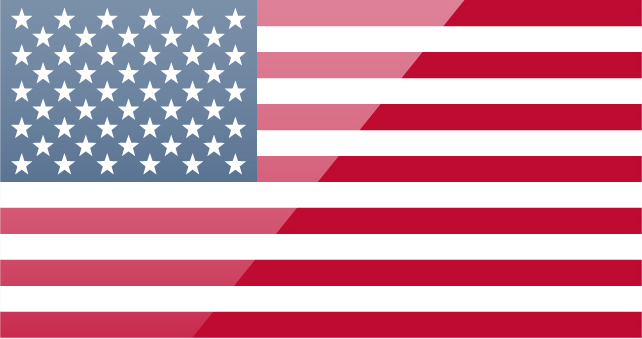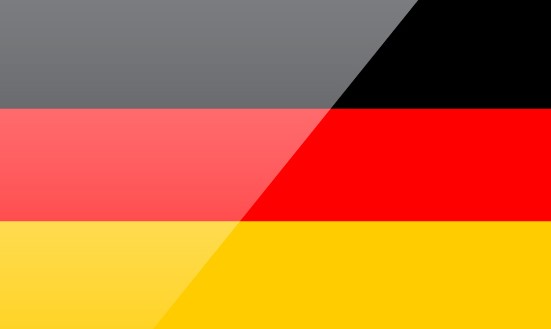2013-Apr-05
Heavy-metal free pretreatment continues to gain ground - Optimum long-term protection in the field
Frankfurt, Germany, April 2013. For the manufacture of agricultural machinery, the pretreatment technologies must be able to meet a wide range of demands: extreme robustness and longevity are required, on the one hand, while for economic reasons the chassis, cross members and add-ons partly only receive a one- or two-layer coating, on the other. This notwithstanding, the machines must still convince the buyers in the showroom with an appealing design and top surface quality. But good looks is not everything. Rather, this is about precisely meeting the corporate design specifications of each individual manufacturer. Therefore, another important factor is high color fidelity.
Different base materials
Rising quality demands and a large variety of standards characterize the agricultural and construction materials industry. Add to this the strongly varying base materials. Unlike the automotive industry, for example, where steel and zinc qualities are bindingly specified and sheet thicknesses are largely constant, in the field of agricultural and construction machinery the pretreatment technologies have to generate constantly good results on thin sheets in the same way as on extremely thick sheets, on hot or cold rolled or on scaled steel. This requires a high flexibility of the pretreatment technology and also of the subsequent baking process. The different sheet thicknesses also lead to different reaction times. Here, care must be taken that thin sheets do not remain in the furnace for too long as otherwise there is a risk of paint embrittlement.
Reliable and suited for multi-metal treatment
Since the manufactures of agricultural machines nowadays also pay attention to a reasonable weight reduction, a varied mix of materials is now common in this sector. Although the axles, cross members and heavy duty components continue to be produced from cold-rolled, hot-dip or electrogalvanized steel, light-weight materials such as aluminum or magnesium alloys are also gaining ground. This is why a state-of-the-art pretreatment technology is characterized by its ability to flexibly react to such varying metal compositions. Phosphating plants only offer limited flexibility as they require sometimes considerable setting-up times. The Oxsilan® technology is suited for multi-metal treatment. Within just a few minutes time the baths are readjusted by adding products and special silane additives. All standard metals such as steel, stainless steel, aluminum or magnesium alloys and cast steel can be pretreated in such baths in quick succession.
Comparative tests with various metal substrates demonstrate that Oxsilan® affords the same corrosion protection as traditional technologies. Test panels exposed to 24-month weathering with additional regular salt spraying show no differences. The phosphate test panel of a cold-rolled steel sheet even exhibited slightly stronger creepage.
Fast and simple analyses
The chemistry of the Oxsilan® technology is extremely robust. This notwithstanding, here too the baths require regular controls. After all, the bath conditions are subject to constant changes due to metal dissolution, carry-over and the actual substrate consumption. Unlike phosphating, this does not require time-consuming manual titration (free acid, total acid or Karl-Fischer). Nearly all analyses can be performed directly on site using portable meters: measurement of the electrical conductivity, pH and fluoride content already gives a largely accurate picture. Like with the phosphating technology, the ICP analysis (inductively coupled plasma) can provide an analysis of all metal ions. The quickest method for checking the coating quality is by means of an x-ray fluorescence analysis (XRF) of the pretreated substrates. The corresponding mobile XRF meters provide the results almost online and thus allow for a timely reaction in case of quality problems.
Technical, economic and ecological benefits
The Oxsilan® process is free from hazardous heavy metals such as nickel or chromium. As a result, time-consuming bath cleaning and expensive disposal of poisonous phosphate sludge are no longer required. Since the process takes place under milder conditions, the treated metals are barely corroded. Per square meter of treated surface a maximum of 0.2 g sludge forms which is not environmentally hazardous. At process temperatures ranging between 25 and 30 °C, bath heating is usually not required. Consequently, the energy costs can be reduced in a significant order of magnitude. Oxsilan® processes normally require fewer rinsing stages than phosphating. Smart rinsing water management therefore allows saving up to 70% water. This has a beneficial effect on the waste water and effluent treatment costs.
Flexibility owing to modern chemistry
Silanes form the basic element of the Oxsilan® technology. By hydrolysis, they combine to form polysiloxanes. In the coating process, the silanol group reacts with the metal hydroxides on the metal surface, for example, where they are chemically bonded. During the subsequent heat treatment or cathaphoretic electropainting (E-Coat), the polysiloxanes cross-link and grow to form a thin coating. Oxsilan® coatings of as little as 100 nm already afford a corrosion protection comparable to that of the roughly ten times thicker coatings generated with zinc phosphating. On balance, this results in a lower materials consumption, shorter treating times and, as a consequence, higher productivity. This findings are supported by practical experience where material throughputs of the Oxsilan® plants outperform those of phosphating plants by about 30 % to 65 %. Since the silanes form a close mesh and are chemically bonded to the metal, they increase surface passivation and this way impede corrosion. In addition, they can react with functional groups of the paint and thereby ensuring a solid bond between metal, Oxsilan® coating and paint.
By integrating functional groups, the silanes can be purposefully optimized to suit any paint. For the frequently used epoxy-, polyester- or acrylic resin paints, amine-modified silanes have proven to be excellently suited, for example.
More with less
High demands are made on sports utility vehicles, construction machines, industrial machines and agricultural vehicles: they must be robust, able to withstand sometimes adverse conditions and function for many years. High quality and an appealing design over many years thus become an increasingly important buying criterion. Practical experience has shown that a pretreatment with Oxsilan®, even under the heavy-duty conditions typically found in agriculture, is fully convincing. The process offers long-term corrosion protection and excellent paint adhesion and is characterized by more reliability, efficiency, flexibility and eco-friendliness.
Download Files:
Article: Heavy-metal free pretreatment
Graphics (printable): Heavy-metal free pretreatment
About Chemetall
Chemetall, a division of Rockwood Holdings, Inc. (NYSE: ROC), is a leading global supplier of special chemicals with a focus on processes for the surface treatment of metals and plastics. Chemetall is headquartered in Frankfurt am Main, Germany, and comprises about 40 companies and 22 production sites worldwide. With 1,900 employees, the Group achieved sales of about 537 million Euro (2011). More at www.chemetall.com.














